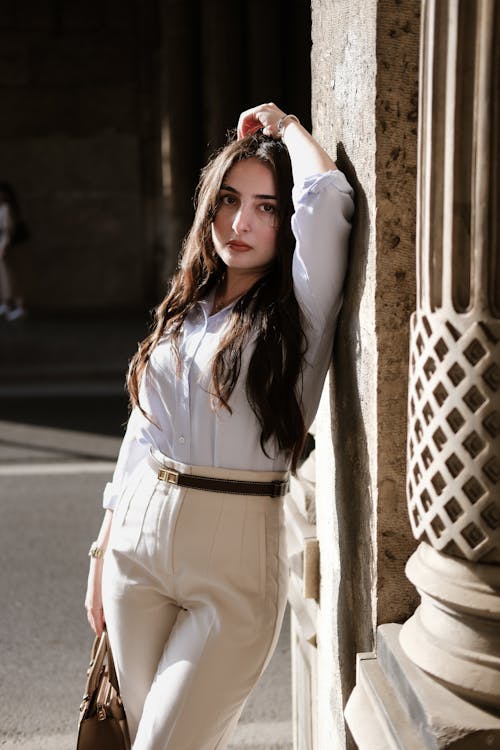The 1940s were a decade defined by World War II, a global conflict that heavily influenced fashion trends. Fabric rationing and a focus on practicality led to a shift away from the extravagance of the 1930s. Yet, within these constraints, a unique and stylish aesthetic emerged.
Women’s Fashion in the 40s
-
Utility Chic: With resources diverted to the war effort, fabric rationing became a fact of life. Skirts became shorter, reaching just below the knee, and dresses were designed with clean lines and minimal embellishments. This shift gave rise to the concept of “utility chic,” prioritizing functionality over elaborate details.
-
The Power Suit: Women entered the workforce in unprecedented numbers during the war. To meet this demand, the classic pantsuit gained popularity. Tailored trousers paired with a crisp blouse or jacket became a symbol of female empowerment and capability.
-
New Glamour: Despite the practicalities, Hollywood glamour still held sway. Actresses like Veronica Lake and Lauren Bacall sported sultry silhouettes – think bias-cut gowns that clung to the curves and dresses with dramatic details like ruffles and cinched waists. This wartime glamour offered a touch of escapism for women.
Men’s Fashion in the 40s
-
Suited Up: For men, the suit remained a cornerstone of fashion. Fabric rationing led to a simplification of suiting, with fewer pockets, narrower lapels, and single-breasted styles becoming more common. Double-breasted suits, once a symbol of sophistication, were seen as an unnecessary use of material.
-
Hats Off? Hats were still very much a part of a well-dressed man’s attire in the 1940s. Fedoras and homburg hats were popular choices, while pork pie hats and straw boaters offered a more casual option. However, hat-wearing started to decline, particularly among younger men, as the decade progressed.
-
Footwear Focus: Leather rationing impacted shoe production during the war. Men turned to sturdier shoes made from canvas or other non-rationed materials. Boots became more common, reflecting the utilitarian spirit of the times Beatles-museum.com/.
Beyond the Clothes
-
Accessories: Accessories in the 1940s were often used to add a touch of personality to a simple outfit. Women favored costume jewelry, scarves, and practical handbags. For men, a tie clip or a pocket watch could elevate an everyday look.
-
Makeup: Makeup trends in the 1940s emphasized a strong, bold look. Red lips and dramatic eye makeup were popular, with actresses like Greta Garbo influencing the trends.
A Legacy of Style
The 1940s may have been a time of austerity, but it also gave birth to some of fashion’s most iconic looks. The power suit, the tea-length dress, and the classic fedora continue to inspire designers and fashion lovers today. The era’s emphasis on functionality and clean lines also resonates with modern sensibilities. So, next time you slip into a well-tailored skirt or a crisp white shirt, remember the women who donned similar pieces while forging a new path for themselves and the world of fashion.

